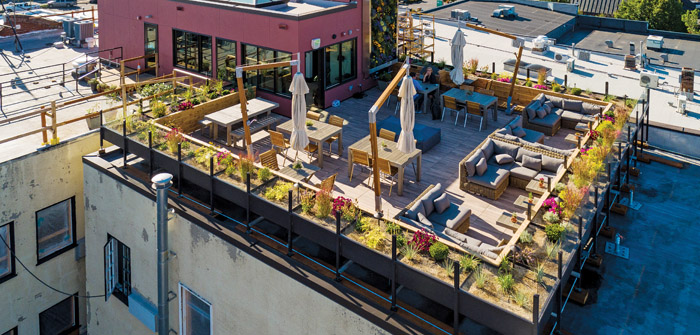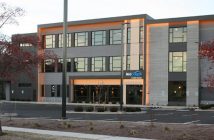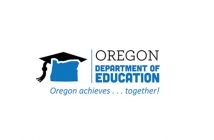(The SCP Hotel features Redmond’s only rooftop experience, and panoramic views of the Cascade Range | Photo by Timothy Park)
First National Bank, whose charter dates back to 1910, now houses Desert Prairie, a women’s boutique. A church building completed in 1912 has become a popular pizzeria, Grace and Hammer. General Duffy’s Waterhole, “which turned around a really blighted area of downtown,” to quote City Manager Keith Witcosky, “attracts musicians from all over the world, and is always packed.” These examples are merely the tip of the proverbial iceberg — and extend throughout Redmond’s downtown core, where vacant buildings, empty lots, and declining property values triggered the creation of urban renewal efforts that have become legendary.
As former mayor George Endicott said, the transformational changes to an area stretching roughly from Maple Avenue/Negus Way in the north to Obsidian Avenue to the south “are nothing short of a renaissance.”
According to Urban Renewal Program Manager Chuck Arnold — who served as executive director of the Downtown Bend Business Association for nine years before being lured to Redmond in 2015 — the origins of this “renaissance” go back to the early 2000s, when city leaders recognized that any revitalization of the struggling downtown core had to start with relocation of Hwy. 97. Redmond subsequently contributed about $13 million in urban renewal dollars to the total project cost of some $90 million to build a bypass, in partnership with the Oregon Department of Transportation (ODOT).
“Before the bypass was put in, 7,000 vehicles — including 18-wheeler semi-trucks — were going through downtown every day,” Arnold said. “Now 40,000 cars per day are using the bypass, with 7,000 cars going through downtown — and they are local people frequenting the businesses on Fifth and Sixth Streets.”
SCP Redmond Hotel — “A Flashing Light on Downtown”
Noting that city officials “had the New Redmond Hotel in our downtown redevelopment plans for close to a decade” as a catalytic stimulus, George Endicott called the historic property’s revival “the cornerstone of that effort.”
Foreseeing its potential economic ramifications, Redmond offered the developer a $2.7 million forgivable loan using tax incremental funding — plus an $800,000 interest-only loan. The $2.7 million loan has the caveat that the building must remain as an upscale boutique hotel operating for 30 years, while $800,000 will come back to the Urban Renewal District to be reinvested in other projects.
As Arnold explained, “We knew that if we could get people on the street, people staying downtown, heads in beds, room tax paid, associated jobs, it would be $3.1 million of economic impact in year one alone.”
When renovation began in 2017, “downtown Redmond was characterized by boarded-up windows, a ton of antique stores, and a tea shop with erratic hours,” said Tobias Colvin, general manager of SCP Hotel (one of eight SCP properties in California, Colorado, Hawaii, Oregon, and Costa Rica). “After 6pm or 7pm, it became a ghost town, with nothing to bring people into the area.”
Using the term “rising tide” to describe the influx of businesses starting up or relocating to Redmond’s downtown area — in contrast to the grim situation in 2017 — City Manager Witcosky called the SCP Hotel “one of the most successful jewels in their chain. The renovation of this historic property tipped the dominos for investment in the town, and created more energy than we ever could have expected.”
Arome — “Building a Sense of Community With the Locals”
Just as the SCP Hotel “created a catalytic effect even before it opened, and put a big flashing light on downtown,” to quote Chuck Arnold, the large scope of this project makes it the exception to Redmond’s urban renewal efforts, given that the financing of improvements and redevelopment is preponderantly aimed at small businesses. Arome, a purveyor of gourmet products and cookware located at 432 SW 6th St., is one example.
Its owner, Janice Bell, wanted to open a second location and chose Redmond because it “It is just the right size. It’s accessible, still easy to park, and there’s room for growth.” Real estate was also more affordable than in downtown Bend, and she was drawn to “Redmond’s super-friendly people.”
Bell “found the perfect site” — and received funding from Redmond’s urban renewal program to help resurrect the outdated Arch Building that had stood empty for the past decade and fallen into disrepair. As Arnold explained, “We were willing to take more risk than the lending market, and created a loan and grant package divided into phases so that Bell’s obligation was reduced each successive year the store remained in business.”
Those funds “gave us the confidence to move in,” Bell said. And after three years, she couldn’t be happier about her decision. “We’re building a sense of community with the locals. It’s wonderful to have repeat customers, get to know people, and form relationships.” ((The renovated building also addresses the need for more housing in the downtown core, with its top floor offering modern industrial studio lofts for rent.)
Ninety Percent Occupancy Rate
The results of Redmond’s urban renewal efforts are dramatic. “In the last five years, we’ve had over 90 percent occupancy downtown — up from 60-70 percent — as other businesses followed the lead of the SCP Hotel,” Arnold said. In the restaurant sector, “we’ve gained 50+ more places to eat in the city overall.”
In 2023 alone, more than 15 new businesses opened their doors in the retail, restaurant, and service sectors — from frozen yogurt to a flower shop, from baked goods to beauty salons, from a coffee shop to a chiropractic office.
Gloria Rice, owner of High Desert Florals, said that ““Being on Sixth Street is amazing. It’s just fun to be a part of a community and an area where people are walking up and down the street, wanting to see all the cute stores and being a part of the charm.”
“Diversity, intermingling of demographics, and foot traffic — all signs of a healthy downtown — have really evolved as businesses recognize that ‘there’s value here,’” Arnold said. “That’s what you want.”
“Good Bones and a Vision”
“Revitalization is much bigger than an individual” or a specific agency, Arnold emphasized. In committing to this long-term investment in the ‘bricks and sticks’ of downtown, “we need to step up together as a city.”
And while he “gets a feeling of pride in seeing a project through to completion,” Arnold also gives credit to Redmond’s “good bones and a vision,” for the city’s transformation. “We have accessible leaders and a cohesive, supportive community,” he said, “I’m just driving the bus, and looking forward to continuing the journey.”





